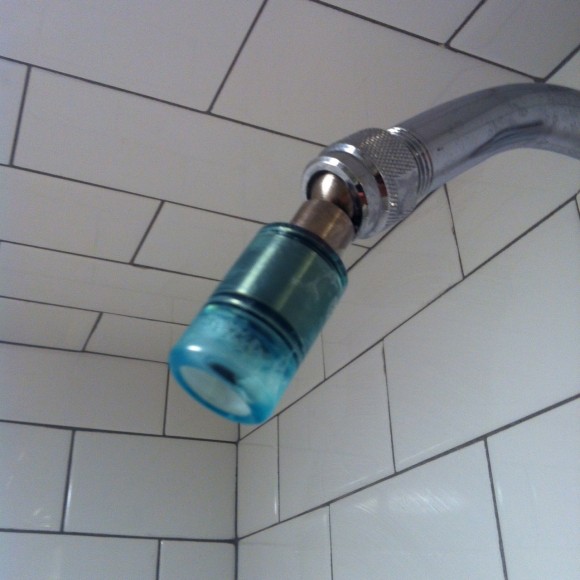Recently I’ve been writing a lot about the environmental and sustainability initiatives on and around campus, such as Penn State’s recycling and waste diversion efforts, CATA’s switch to natural gas fueled buses, and the switch to reduced-flow shower heads in the bathrooms. It seems that everywhere you look on campus there’s a program to reduce, save something, from electricity to emissions to waste. So in a similar fashion today I’m going to investigate the ubiquitous hand dryers at Penn State.
I don’t question the environmental benefits of the hand dryers. Although energy is consumed in the manufacturing process and electricity is required to operate the dryer while in use, an electric hand dryer saves energy over its disposable counterparts. MIT published a detailed (113-page) life cycle assessment of electric hand dryers compared to other drying methods, including different types of hand dryers, washable cotton towels, paper towels, and paper towels made from recycled materials. They study covered all impacts for the methods, including manufacturing, transportation, operation, and disposal. Overall, the study concluded that the hand dyers generally had a lower environmental impact than the other methods. Additionally, hand dryers offer significant cost savings over paper towels, another obvious benefit for a large operation such as Penn State.
But not all hand dryers are equal. The one in my hall’s bathroom is a Machflow, manufactured by Mediclinics. Its website promotes the machine as 80 to 90 percent more efficient than traditional hand dryers. Another benefit listed by the company is that its model produces the the least amount of noise pollution. But at two in the morning it’s definitely not quiet… But no paper towels (or trash cans) are provided in the bathrooms, so it’s either bring your own towel, leave your hands wet, or annoy people.

Mediclinics Machflow
Mediclinics touts the device as “ultra-fast,” drying hands in “record speed, between 8 and 12 seconds.” However, I’d also like to contest this statement. Never in any circumstance have I ever been able to dry my hands completely in 12 seconds with one of those dryers. Even when I shake some of the excess water off my hands before drying, I feel like I standing there forever—and the thing always shuts off while I’m using it.

Xlerator
On the other hand, the hand dryers in other Penn State bathrooms all seem to be way more effective. The Xlerator dyer in the bathrooms at the HUB seem to work very well, completely drying hands in what seems like a much shorter time. Upon further investigation, it seems that what allows Mediclinics to market their dryer as energy efficient is that their dryer as adjustable power settings. If I had to bet, I’d say Penn State sets the dryers to their minimum power setting (420 Watts), as opposed to the 1100-Watt maximum. The Xlerator dryers, however, are 1500-Watt dryers, and they don’t seem to be adjustable. It’d be interesting to study the energy cost of running a lower wattage dyer for a long time versus a higher wattage dryer for a shorter time. Perhaps this is a case where “green” marketing actually promotes lower-quality products. Sure, you can make a hand dryer that uses a minimum amount of electricity, but it might not get your hands dry as effectively. Instead, the focus should be on increasing efficiency—getting more heat and drying capability out of a minimum amount of energy.
MIT Study: http://msl.mit.edu/publications/HandDryingLCA-Report.pdf Mediclinics: http://www.mediclinics.com/machflow-sensor-operated-hand-dryer-m09a Xlerator: http://www.exceldryer.com/products_xlerator.php







Recent Comments